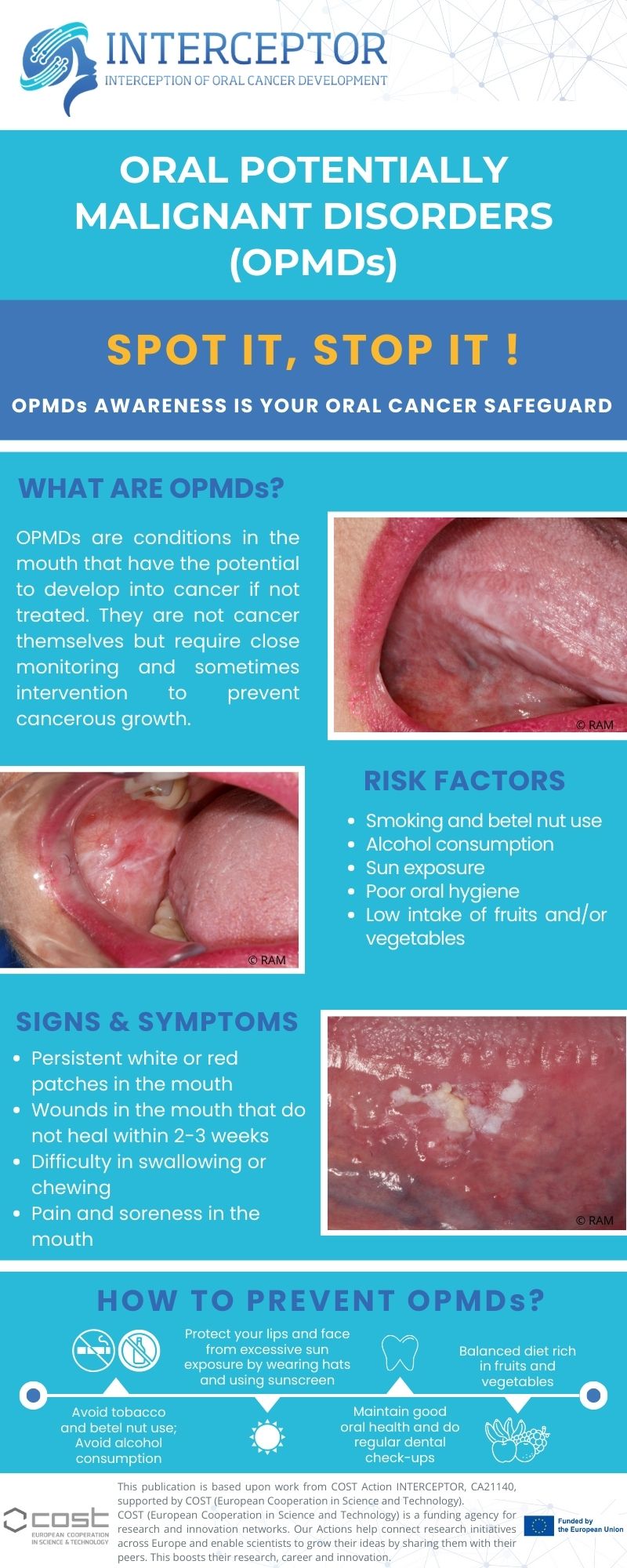World Health Organization (WHO) classification defines oral potentially malignant disorders (OPMD) as “clinical presentations that carry a risk of cancer development in the oral cavity, whether in clinically definable precursor lesions or in clinically normal oral mucosa”
OPMD estimated global prevalence is 4.47% in a recent meta-analysis. In Western countries, oral leukoplakia, oral lichen planus, and lichenoid lesions are the most prevalent (4.11%), males are more frequently affected, and tobacco is the most frequent cause. Squamous epithelial hyperplasia and dysplasia are the recognized histological substrates of OPMD. A meta-analysis showed an estimated mean for malignant transformation of 12%, ranging from 0% to 36%. Besides, OPMD shows a high rate of relapse. The proportion of oral cavity squamous cell carcinoma (OCSCC) preceded by OPMD is largely unknown. The early diagnosis and management of OPMD represent a unique opportunity to develop strategies that will prevent malignant transformation.






